#A Comet in the Heavens
Text

Johann Peter Hebel (1811), via A Place in the Country by W. G. Sebald
#Hebel#Johann Peter Hebel#literature#romanticism#quotes#lit#1800s literature#W. G. Sebald#Sebald#A Place in the Country#A Comet in the Heavens#german literature#romantic#1800s#19th century literature
0 notes
Text

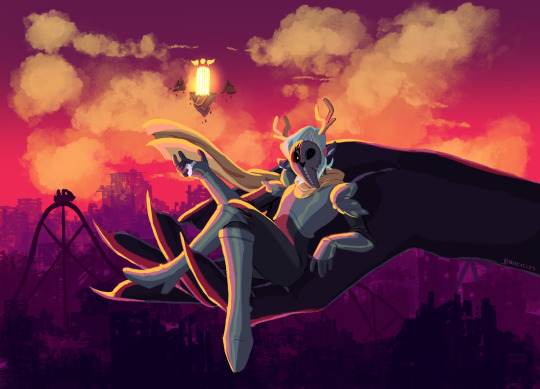
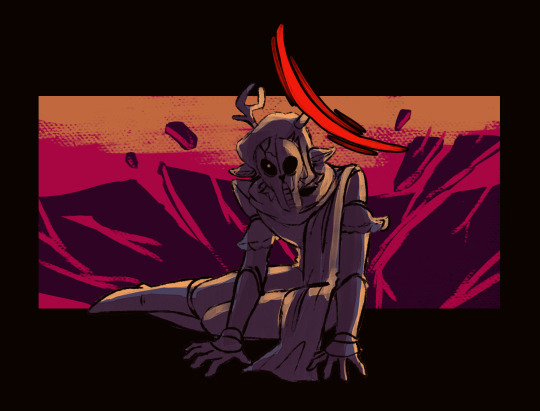
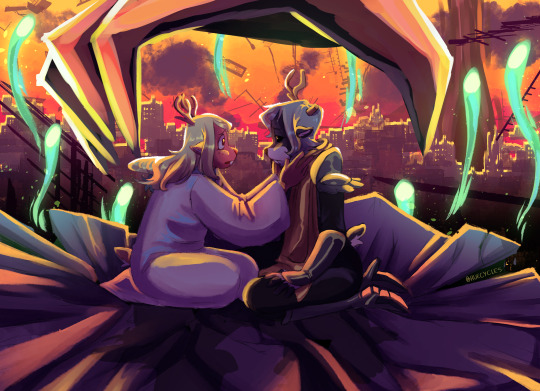

Preparations are complete. Welcome to the World's Edge Festival.
#comet holiday#mayor holiday#the knight#noelle holiday#angel's heaven#deltarune#deltarune au#deltarune fanart#my art
1K notes
·
View notes
Text

the abyss of solitude
#artists on tumblr#photography#astrophotography#astronomy#astro observations#astro community#astrophysics#astronomical observation#astronomical observatory#observatories#cosmic secrets#cosmic stories#cosmic#universe#comet#space#space exploration#outer space#signs from heaven#cosmic poetry
36 notes
·
View notes
Text

#heavens gate#cult#ti#do#comet#aliens#nike#just do it#hale-bop#new post#website#still active#1997#skynd#skyndicate
7 notes
·
View notes
Photo
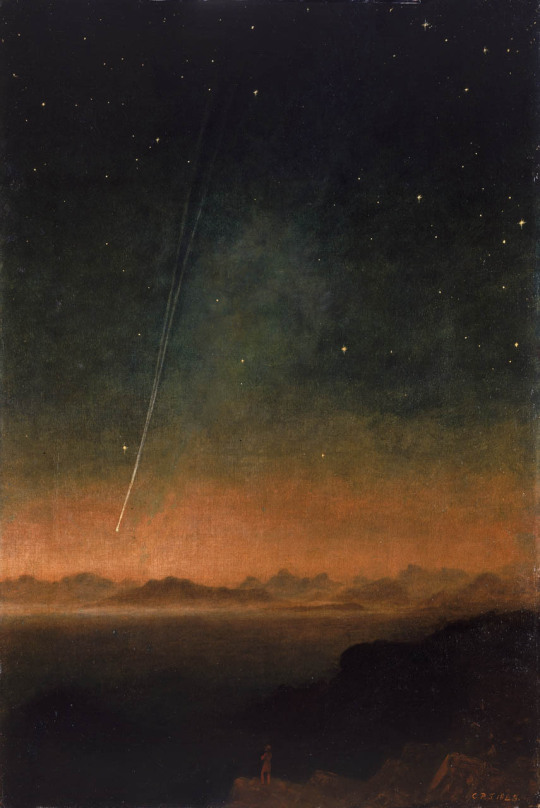
Charles Piazzi Smyth - The Great Comet of 1843 (1843)
* * * *
the signs after they die
aries: rules hell
taurus: becomes a comet
gemini: starts a new life with no memories of the past one
cancer: goes to heaven
leo: starts a new life as a god
virgo: goes to hell
libra: stays in earth as a ghost
scorpio: marries aries
sagittarius: rules heaven
capricorn: becomes a planet
aquarius: starts a new life in another constellation
pisces: becomes a mermaid
56 notes
·
View notes
Text
Here are the following dimensions and home planet.
POTENTIAL TRIGGER WARNING: There are mentions of how sinners are tortured in hell.
1. Eylvhraszokjumni: It’s divided into 10 concentric spheres and the entrance is blocked by a large gate that’s delicately handcrafted from polished golden pearls. There is a golden booth that’s run by two angels, Kephatromus and Filahozepus, who oversee the trustworthy and indestructible list that contains the individuals that are accepted into Eylvhraszokjumni. In order to further prove the legitimacy of the list, Aynjuwobhet weighs the heart of each soul on a scale against the feather of Mulwazort. If the heart is heavier than the feather, they’re banished to hell or given to Aymeszowut and cast into eternal darkness. They’re banished to purgatory if the heart is lighter than the feather and when the scales are balanced, they’re accepted into Eylvhraszokjumni. There are two cherubim and two watchers who guard the gates of Eylvhraszokjumni, ensuring that no intruder tries to break in. Belvatrikhusis responsible for sending each soul to their corresponding sphere. There are four river that travel through the Primum Mobile of The Angels to the Fixed Stars of Faith, Hope, and Love: Pischedona, the river of gold and inspiration; Gihaszoten, the river of happiness; Hridazoktegus, the river of swiftness; and Phaszulokten, the river of copper and fertility. Eylvhraszokjumni is known for their luscious fields, heavily dense forests, fluffy clouds that surround the outskirts of each sphere, and architecture that’s a blend between Greco-Roman and Baroque. They also have beautiful mansions, gardens with flowing streams, ornamental springs, dense shrubbery, deepening shade, and trees that have bunches of low-hanging fruit. Eylvhraszokjumni is often referred to as heaven, the happy hunting grounds, and the promised land.
a. Moon Of The Inconstant: This sphere houses the souls of inconstancy where the dead have abandoned their vows. This ultimately means that they were deficient in the virtue of fortitude and often forcibly removed from their personal covenants. As the lowest sphere, their dome was made from jasper and and the veins of cold-blooded animals. Their main symbol and planetary rule is the Moon, which is called Lurszhawobemi and it simply means “moon or month” in the Æylphitus language.
b. Mercury of The Ambitious: This sphere houses the souls who did good in pursuit of fame, but due to their bloated ambitions, they were deficient in the virtue of justice. The dome of this sphere is made from the finest silver and purified hellfire. Their main symbol and planetary rule is Mercury, which is called Hilvagorszemun and it means “silver water” in the Æylphitus language.
c. Venus of The Lovers: This sphere houses the souls of faithful lovers, but they were deficient in the virtues of prudence and temperance. The dome of this sphere is made from vital fluids, ocean water, and the remnants of stars. Their main symbol and planetary rule is Venus, which is called Phusvertozija and it means “passion for sexual love” in the Æylphitus language.
d. Sun of The Wise: This sphere houses the souls who possess great wisdom and have effectively helped to illuminate the earthly planes of existence intellectually. Unlike the previous spheres, they weren’t deficient in fortitude, justice, prudence, and temperance. The dome of this sphere is made from white pearls and the veins of warm-blooded animals. Their main symbol and planetary rule is the Sun, which is called Phobazrukten and it simply means “bright or radiant” in the Æylphitus language.
e. Mars of The Faith-Warriors: This sphere houses the souls who possess truly good intentions and are willing to give their lives to the Æylphitus. As a result, they displayed the virtue of fortitude and these souls were either used to create stars or new angelic warriors. The dome of this sphere is made from iron, dazzling stones, and the moulted skins of newly accepted angels. Their main symbol and planetary rule is Mars, which is called Aylwehormiktus and it means “victorious one in the place of sunrise” in the Æylphitus language.
f. Jupiter of The Just Rulers: This sphere houses the souls who were willing to rule with good faith and uplifting fairness. As a result, they displayed the virtue of fortitude and these souls were either used to create the birds or new angelic judges. The dome of this sphere is made from brass, white gold, and the tears of mourning and acceptance. Their main symbol and planetary rule is Jupiter, which is called Brahzomusjepti and it means “giant lord of the sacred speech” in the Æylphitus language.
g. Saturn of The Contemplatives: This sphere houses the souls who have appropriately contemplated the meaning of existence and understood that the rules of fate are tied to predestination. As a result, they displayed the virtues of prudence and temperance, and these souls are close to the truth of the Æylphitus. The dome of this sphere is made from gold, multi-coloured garnets, and rubies. Their main symbol and planetary rule is Saturn, which is called Krunaphomezi and it means “shining cut” in the Æylphitus language.
h. Fixed Stars of Faith, Hope and Love: This sphere houses the souls of those who possess a beatific vision. They play a role in creating humble beginnings that are built off of a foundation of faith, hope, and love. The dome of this sphere is made emerald, heavenly knowledge, and divine light that’s incomprehensible to mortals.
i. Primum Mobile of The Angels: The Äylcephomus occupy all spheres of Eylvhraszokjumni, but this place is the birthplace of the older generations of angels. This sphere is moved by the spiritual essence of Äylcephinozur and the divine council. As a result, its rotating motion causes all of the other places it encloses to move. The dome of this sphere is held up by a massive, enigmatic lote tree, marking the boundary between accepted and forbidden knowledge. Many familiar and unfamiliar birds sit and sing on its branches, and its leaves are used to wash dead bodies. The lote tree becomes sturdier each day through the divine acknowledgement and tender care it receives from the angels.
j. Empyrean: This sphere is the source of all light, the elemental quintessence, and heavenly reckoning. It’s the dwelling place of the divine council and many Hirczalotepus Tejasozuri, including Äylcephinozur. Their characteristic smell is often described to be similar to the burning or charring of vegetable and animal matter. This sphere contains the Garden of Eylvhraszokjumni, the Fountain of Youthfulness, and the first weeping maple and bleeding oak. As the highest sphere, their dome is made from chalcedony, celestine, sunstone, moonstone, and blood red water.
2. Nifjazroghetus: It’s divided into 9 concentric circles and the entrance is blocked by a gargantuan land beast with big, watchful eyes, a large mouth that has prominent, carnivorous teeth, and a tongue that acts as a carpet. Kerabhonius sits on a stony throne on top of the beast’s head with Oyrthalenius standing behind her with a list of those who should be accepted into Nifjazroghetus. Kerabhonius and Oyrthalenius are responsible for guarding the gates of Nifjazroghetus, ensuring that no sinner leaves and devouring the living who try to forcibly enter. There are also two large minotaur-like guards patiently standing before the mouth of the beast with bladed weapons and impenetrable shields. Once Kerabhonius and Oyrthalenius have decided that an individual is accepted, the beast’s gaping mouth reveals a screaming pit of hellfire. Similar to Belvatrikhus, Verghulona are responsible for sending each sinner to their corresponding circle. Nifjazroghetus is known for their harsh coldness and blistering heat, mountains of skinned corpses, flaming cesspools, hellfire that surround the outskirts of each circle, and architecture that’s a blend between Neoclassical and Gothic. They’re also known for the five rivers: Stenogixa, the river of hate; Phlegatobius, the river of boiling blood and fire; Lethazo, the river of unmindfulness and oblivion; Ächerzonius, the river of woe; and Koctazus, the river of wailing. A gargantuan red, pale yellow, and black palace lies in the deepest centre of Nifjazroghetus on top of impenetrable ice that covers molten lava. This dimension is often referred to as hell, the underworld, and the abode of the damned.
a. Limbo: This circle houses the souls who lived an unremarkable life and have abandoned their earthly labours for something unfulfilling and selfish. As a result, the guiltless are damned to live in a deficient form of Eylvhraszokjumni. Lethazo passes through Limbo and those who drink from its waters would lose their identity, becoming empty husks of their former selves. This place is known for its light and dark grey skies, placid weather, various narcissi, and the Pnemazokhus who live here.
b. Concupiscence: This circle houses the sinners who were overcome by lust. Those who have inconsistently committed lustful acts are buffeted back and forth by the terrible winds of a violent, endless storm. Those who have consistently committed lustful acts are used by infernal sex industries in order to perform and satiate various perverted desires or turned into unwilling sex dolls.
c. Overconsumption: This circle houses the sinners who were overcome by gluttony. Those who have inconsistently committed gluttonous acts are blindly grovelling in putrid mud produced by the sulphuric rain. This mud shifts from molten to icy, which greatly depends on the passing weather. Those who have consistently committed gluttonous acts are forced to metamorphose into slabs of throbbing meat that reincarnate onto their hooks once consumed. They serve boiling water as drinks and the trees bear fruits that are like the heads of draconic beasts.
d. Avarice: This circle houses the sinners who were overcome by greed. Those who have inconsistently committed avaricious acts joust each other by using large unbreakable rocks that are full of money and precious stone. Each sinner is forced to push these individual rocks up an active volcano, rolling away once they reach the top. Those who have consistently committed avaricious acts are used to make products and money. In order to make their punishment endless, they have the ability to continuously regenerate their body whenever a piece of them is used. Venomous serpents and scorpions are commonly seen in this area compared to anywhere else in Nifjazroghetus.
e. Ire: This circle houses the sinners who were overcome by wrath. The inconsistent active wrathful are partially emerged in watery slime and endlessly fight each other. The inconsistent sullen lies beneath the semi-solid liquid and has stiff movement. The consistent active wrathful are forced to join a gladiatorial fight that goes on for an eternity. The consistent sullen are forced to sit in blazing chairs of rusty nails, while man-eating termites crawl over them. They have the ability to continuously regenerate and are used to create weapons and shields.
f. Apostasy: This circle houses the sinners who were overcome by heresy. Those who have inconsistently committed heretic acts are trapped in iron maiden-like tombs consumed by hellfire. Those who have consistently committed heretic acts are flayed and crucified, being forced to watch others suffer. They’re also whipped and stabbed by infernal heretics on a daily basis. Their organs are used for numerous black markets and will regenerate them after dissection. This circle is guarded by iron walls and is moated by Stenogixa with a large, fiery eclecticism building in the middle, acting as an entrance to the lower parts of Nifjazroghelotus.
g. Barbarity: This circle houses the sinners who were overcome by violence and are divided into only three different punishments according to the type they have committed. Killers, war-makers, plunderers, and tyrants are immersed in Phlegatobius, shooting arrows at those who try to escape or emerge higher than attended. The suicidals torment those who attempted or died by suicide, forcing them to metamorphose into grotesque trees that bear cocoons full of unknowable organs. These gnarled, thorny trees populate an area in this circle called the Wood of Callous Hangings. Blasphemers are stretched supine upon the burning sand, sodomites endlessly run in circles from flying fiery serpents, and usurers are forcibly put in a crouching crowd, huddling and weeping blood together. The entrance of this circle is accompanied by shattered stones that resulted from its frequent earthquakes.
h. Fraudulence: This circle houses the sinners who were overcome by fraud and there are ten different punishments according to the type they have committed. Panderers and seducers make two files and march quickly in opposite directions, steeping on prickly bushes and fraudster demons of the same name whip them for an eternity. Flatterers are steeped in a tar-like excrement, while they aggressively howl and fight amongst themselves. Simoniacs are placed head-downwards in round, tube-like holes with hellfire burning at the soles of their feet. Sorcerers are forced to walk backwards for eternity due to their twisted heads, while being blinded by their own fresh and cold tears. Barrators are immersed in a lake of boiling pitch, being torn to pieces with claws and grappling hooks if they’re above the surface. Hypocrites are crucified onto a narrow track of flaming barbed wire with four large stakes. Thieves pursued and bitten by monstrous reptiles, who curled themselves around the sinners and bind their hands behind their backs. Counsellors of fraud are consumed by blinding white flames, while sowers of discord are endlessly hacked and mutilated. Falsifiers of persons, money, and words suffer various afflictions such as burning fevers, dropsy, thirst, and filth.
i. Perfidy: This circle houses the sinners who were overcome by treachery and there are four different punishments according to the type they have committed. Those who have betrayed their kindred have their necks and heads out of the ice, only being able to bow in order to protect themselves from the freezing wind. Those who have betrayed their country have their heads out of the ice, but are unable to move their necks. Those who have betrayed their guests lie supine on the ice, with their frozen tears covering their eye sockets. Those who have betrayed their lords and benefactors are fully submerged in the ice, distorted and twisted in every conceivable position.
3. Plugaboktezrin: It’s divided into 7 terraces and the entrance to Plugaboktezrin is blocked by a large black goat with red eyes and the exit is guarded by Buphozemiat. Each terrace is ruled by the 7 Deadly Sins, an notorious and well-respected group of fallen angels. These rulers are responsible for purifying the sins of those who have been granted redemption from the divine council. Plugaboktezrin is the middle dimension between Eylvhraszokjumni and Nifjazroghetus. Plugaboktezrin is known for their beautifully stunning dawn, hybrid wildlife, gorgeous marble statues, and architecture that’s a blend between Byzantine and Iranian. This dimension is often referred to as purgatory, the abode of purification, and the reunion between heaven and hell.
a. Pride: This terrace is ruled by Remuloktiah, the Sin of Pride, and she’s responsible for aiding the proud souls in purging their sins. They’re bent over by the weight of huge statues that represent humility on their backs that have the inscription of “The humble spirit cracked open the palm-kernels, bringing life to the starry firmament”.
b. Envy: This terrace is ruled by Penoduzhila, the Sin of Envy, and she’s responsible for aiding the envious souls in purging their sins. They wear penitential grey cloaks and have their eyes sewn shut with iron thread. They have to carry the messenger falcons of ancient titans and help with heralding the truth, while setting aside their biased jealousy.
c. Wrath: This terrace is ruled by Aynimolechus, the Sin of Wrath, and he’s responsible for aiding the angry souls in purging their sins. They walk around in acrid smoke that causes blindness and their mouths are sewn shut with gold thread.
d. Sloth: This terrace is ruled by Elihonuzba, the Sin of Sloth, and he’s responsible for aiding the lazy souls in purging their sins. They’re engaged in ceaseless activity that benefits all Æylphitus breeds, especially the Äylcephomus and Lorvaztekiphus.
e. Greed: This terrace is ruled by Zurishalonde, the Sin of Greed, and he’s responsible for aiding the avaricious souls in purging their sins. They lie face-down on the earthy ground and recite unknown prayers in the Æylphitus language, pledging their allegiance to higher planes of existence and the titans.
f. Gluttony: This terrace is ruled by Sopheklunivja, the Sin of Gluttony, and she’s responsible for aiding the gluttonous souls in purging their sins. They’re starved in the presence of fruit-bearing trees and far away livestock that will forever be out of their reach.
g. Lust: This terrace is ruled by Hersudolitja, the Sin of Lust, and she’s responsible for aiding the lustful souls in purging their sins. There is an immense wall of holy flame that every soul has to pass through in order to achieve full purification. They run counter with the sun, from west to east, symbolising their unholy concupiscent desires against the Æylphitus and creation of Cosmos.
4. Womb of Chaos: This dimension is the birthplace for all Hirczalotepus Tejasozuri and it’s often attributed to Chaos because they’re viewed as the creative mother and primordial abyss. It incubates the unborn in unnatural structures that appear to be a fascinating blend between Ancient Egyptian sarcophagi and medieval iron maidens. These pseudo-cocoons are encased in an ambiguous substance that looks like honey or semi-solid amber. It’s called melapozuhti (“fear of terrifying splendour” in the Æylphitus language) and above them is a blinding white void and this dimension infinitely repeats itself. The surface of the mysterious substance is guarded by the first son of Earth’s Mother, which is J’Pluchabtokreszind. Once a Hirczalotepus Tejasozuri is ready to be born, the pseudo-cocoon opens and their unique spirit leaves the melapozuhti and white void into their newly created body.
5. Stomach of Caligo: This dimension is often attributed to Caligo because they’re viewed as the destructive father and primordial mist. There is no such thing as night because the sky always stays a foggy red with a blazing, watchful yellow-orange eye that provides sunlight. In the centre of the Stomach of Caligo, there is a large tower dungeon that reaches into the sky and it’s built on a rectangular base with 35 successive levels of receding tiers. Half of the levels are deep within the earth and the entire height of the tower clocks in at 20153 ft (614263.44 cm). The tower is home to many Æylphitus such as Fajekhomusi and Æyldzritchons, and even ascended deities. The ground is covered in the skinned, soulless, ruddy corpses of those who weren’t accepted into Eylvhraszokjumni, Nifjazroghetus, and Plugaboktezrin as well as the corporal bodies of Pnematocius.
6. Somniferous Realm of Eternal Dreams: It’s a secret dimension consumed in eternal darkness and miniscule bioluminescence. It’s commonly believed by many that this dreamy realm is beyond the rising sun and deep within a cavernous rift in outer space. It’s home to the five dream titans and their loyal subjects who inhabit a nearly infinite castle with uniquely exotic, yet perfectly elegant decor and furniture. The creators and supreme rules consist of the following:
a. Phobazlestur, the Frightener of the Beastly Silhouette;
b. Ichelotus, the Resembler of the Deep Consciousness;
c. Phuntemosza, the Deceptive Sculptor of the Inanimate;
d. Morphaleszi, the Leading Fashioner of the Humanoid;
e. And Hepnazomus, the Inverted Torch of Resting Eyes.
The most prominent feature of this castle are two dimensional gates that transport dream-based spirits into the minds of various beings. The gate made from animal horns and antlers are used to send prophetic dreams from the titans and other supernatural beings. The gate made from ivory is used to send dreams that are false and possess no apparent meaning, but it has the contents of a person’s subconscious mind and their emotions.
7. Eylphruszomita: Nobody lives in the kingdom of Eylphruszomita, expect Tirchelomanus, Oberszutan, Spregathon Hobaglekinus, Bretomaldius Gulsomeria, Girtezolanus Tergwalodius, and the royal retainers and knights of the royal family. During the long daylight hours Fajekhomusi are allowed to open shops within the kingdom, but would have to leave by nightfall. The main residents, light elves and fairies, have houses made from decent-sized mounds or wooden, tree-like structures. Outside of the residential area, there is a heather-covered moorland with golden fields filled with exotic and familiar wildflowers. There are a ton of mountains, greenery, fields, forestry, ponds, lakes, and rivers, which strengthen the Fajekhomusi relationship with nature. Fairy rings act as portals between Eylphruszomita and the mortal plane of existence. Paths and directions are often maze-like, which makes unfamiliar travellers get lost relatively easily unless they have a trustworthy guide. It’s said that their food and drinks produce hallucinogenic and euphoric properties for non-Æylphitus. Gold and numerous rare precious stones are very common in Eylphruszomita, and they’re used for all sorts of mundane objects. This dimension has all four seasons, but the daylight hours are longer than nighttime hours.
8. Demiszorpha: The Theszarpoks and Felapothuki call their earthbound and perfectly well-kept abode Demiszorpha. There are numerous ecosystems from coral reefs to taiga in order to accommodate the various environmental needs of each Theszarpok. Demiszorpha is ruled by a democratic government that’s made up of numerous political members that make up most of the animal kingdoms. There are sustainable residential areas in each biome and they put a huge emphasis on uplifting equilibrium through a clean environment. According to legend, there is a fogbound town located somewhere in Demiszorpha that the Felapothuki inhabit. They’re known for housing the first temple of Earth’s Mother as well as three monumental statues of Buhemozrita, Liwatozhendus, and Zekwaboruchni respectively.
9. Olympus: This dimension can be found by entering through an invisible barrier on Mount Olympus, which leads to a pair of golden gates that have a heavenly shine. Ziesowa is the ruler of Olympus, but after he was kicked out due to his adultery, misogynistic views, and narcissism, Herivota took his place. The palace of Ziesowa and his family has a fairly simple layout with a central hall, private bedchambers, and storage rooms. Within Ziesowa’s palace, there is a golden-floored hall that acts as a council chamber and feast hall, providing The Pantheon members an expansive view of the world below allowing them to observe humanity from the heights. The golden tables and tripods of the feast were Golekhamiv that had been animated by Hespazotun, trundled in and out of the hall as required. Other members of the Greek Pantheon dwelt in fabulous palaces of marble and gold with bronze foundations. These palaces were surrounded by cloistered courtyards with golden pavements and there are a few scattered stables for immortal horses. Its dimensional foundation is a bronze dome with bright upper air, which is lavishly covered in clouds, snow, and the path of stars. The Pantheon members who live in Olympus feasted on ambrosia and nectar, substances created from the meadows of an encircling river, human and animal corpses, and the smoke of sacrificial offerings wafting into their dimension.
10. Uymenozlaidh: This technologically advanced planet is home to all sorts of Uyxithlokazeb subspecies. Rhoclendavius Hulevotina L’Dimenotragus, an avatar of Ymabjelphorvius, is the ruler as well as main law-maker and mediator, and he places the sturdy protection of his planet on his most trusted servants and his army. Uymenozlaidh is known for its bustling cities with rich and honest industries, flying cars, exotic items, peaceful residential areas, contemporary and neo-futurism architecture, and multicultural food and civilians. It has a similar atmosphere to Earth and they only have one boreal forested landmass that’s untouched because it’s where all of Uymenozlaidh’s land animals live. Besides land animals, they have aquatic life and appropriate ecosystems that fit both types, but birds don’t exist in Uymenozlaidh. 58% of the planet is made up of freshwater water with one westside 3.2 to 4.9 million km^2 patch of saltwater that’s called the Trapezoidal Vriktejophulsza. There is no such thing as winter and summer, so the planet always experiences the weather of autumn and spring. Their weather phenomena consists of massive superstorms, small dust devils, acid rain, extreme lightning, downbursts, derechos, and wild temperature swings. They have five moons orbiting around Uymenozlaidh: Zerjablophinkus, Flurkbaszjomne, Psuvezrojikla, Gromjerszulakt, and Vinmazorkuphet.
11. Ljubazkosherd: This planet is far more technologically advanced compared to others due to its antiquity and the extremely intelligent Lacebzortius Reptuzolvas. They’re ruled by a federalist, slightly aristocratic government with one or two cultural elders that help to make important decisions and set up various laws and norms. Ljubazkosherd is known for its secret black markets, wealthy residential areas, rich mineral deposits, and high-tech and Art Deco architecture. Their natural biomes consist of tropical rainforests, deserts, and grasslands, and the freshwater, self-replenishing ocean makes up 36% of this planet. The only form of fauna that they possess are all sorts of exotic, extraterrestrial bugs from beetles to spiders and centipedes to moths. Winter doesn’t exist on this planet, but they do experience the weather of autumn, spring, and summer all-year around. Their weather phenomena consists of heat bursts, severe thunderstorms, dust storms, tornadoes, jet streams, blood rain, derechos, and tropical cyclones. They have three moons orbiting around Ljubazkosherd: Ruktazlohemni, Wlusvaktozrine, and Bheszulophrija.
12. Ghustrapodemi: This planet is the sunny, beach-infested home for both Blodezruntha Ugakhozels and Schzlanjeko Atikhozrupes. The Ugakhozels are the rulers and soldiers of this planet, while the Atikhozrupes are the workers and general caregivers. Ghustrapodemi is known for its 1380 beaches, exotically mountainous regions, sustainable agricultural areas, culturally designated places for dance and music, and Neolithic and Indo-Saracenic architecture. The planet is made up of purplish bodies of water that are 37% freshwater and 41% saltwater. Ghustrapodemi lacks any fauna, but they do possess distinctive, self-replenishing flora that both Uyxithlokazeb subspecies can sufficiently live off of. Their exquisite landscapes resemble tundras, tropical rainforests, and chaparrals, and they only experience spring and summer. Their weather phenomena consists of supercells, storm surges, heat lightning, extratropical cyclones, heat waves, rainstorms, gales, landspouts, and waterspouts.
13. Zrekjablophinus Glukomexisza: This comet was the supposed original home for the older generation of Cuhejzlostrian Menvuzrotas and their supreme creators. There isn’t much information about Zrekjablophinus Glukomexisza, but legends say that it was eaten by a cosmic serpent or went supernova. In reality, it mysteriously turned into the hospitable planet of the Regavozlus Khotzulergina. It’s the most extravagant and richest planet to ever grace the multiverse, and all of its water, food, flora, fauna, seasons, and weather are artificially produced. Zrekjablophinus Glukomexisza is known for its elegant shopping malls, luxurious residential areas, tranquil bathhouses, gladiatorial stadiums, and Romanesque and Colonial Revival architecture.
14. Wrutjaklozhe: This pocket dimension is the abode of the Philazroktenus Aveloszidhs, their handcrafted slaves, and their other creations. The sky is covered in a thick grey-ish smog and most of the landscape is made up of precious minerals, crystals, rocky caves, snow, and minimal plant life. They live underneath the surface of Wrutjaklozhe as it’s practically unlivable outside due to the extreme toxicity of the naturally occurring smog. The Philazroktenus Aveloszidhs and all of their creations live in cavernous cities full of biomechanical intricacies and interesting technological devices.
15. Knidezrosa: This was the original home dimension of the Sciphurjoza Marjevogius. It was one gigantic ocean full of freshwater and it was the size of two and half Earths. It was full of coral reefs as well as flora and fauna that was fully capable of living in water. There were six oceanic volcanoes that they believed were a gift of appreciation from the titans. The Sciphurjoza Marjevogius had impressively advanced technology that’s able to resist all sorts of water conditions. Their vernacular, neoclassical infrastructure was made from volcanic rocks, precious stones, and highly durable aquatic plants that can be found in Knidezrosa.
16. Knidezlosjuht: This is the new home of the Sciphurjoza Marjevogius, which is a large moon that doesn’t orbit around any known planet. It has deep lakes, marshes, and ponds, and the gravity was partially less dense than Knidezrosa which forced the Sciphurjoza Marjevogius and the wildlife they brought with them to quickly evolve. They were able to evolve effectively through numerous genetic experiments, so they’re now capable of also breathing on land and are able to easily adapt to high and low gravity. After a few years, they were able to terraform their new home into something that mostly resembles Knidezrosa. Instead of volcanoes, they were only able to create six geysers, so that means that volcanic rocks aren’t a part of their new infrastructure. Knidezlosjuht doesn’t have any proper seasons, but it still experiences specific weather phenomena associated with each one. Their weather phenomena consists of freezing hailstorms, violent winds, heat waves, tornadoes, heavy downpours, bomb cyclones, thunderstorms, whirlpools, storm surges, waterspouts, and cloud inversions.
#writerscorner#writing#creative writing#fantasy#multiverse#potential trigger warning#viewer discretion is advised#heaven#hell#purgatory#divine comedy inspired#fairyland#planets#comet#dimension#homeland
8 notes
·
View notes
Text


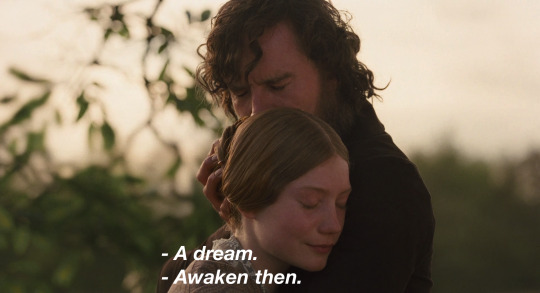
Just Like Heaven (2005)/ Dust and Ashes - Natasha, Pierre, and the Great Comet of 1812 (2012)/ Jane Eyre (2011)
#just like heaven#dust and ashes#great comet#jane eyre 2011#natasha pierre and the great comet of 1812#did i do this right#anyway
39 notes
·
View notes
Text

SHAVED .
this is a sneak peek of what im workign on btw im just goofing around
#oh great heavens!!!#Pheonix the fire haven wubbox#wubbox oc#epic wubbox#msm oc#msm#my singing monsters#art#artists on tumblr#comets art galore
5 notes
·
View notes
Text

[Image ID: A six striped flag, from top to bottom: Dark blue, purple, pink, light green, green, and dark green. End ID]
Faeure: A gender related to the fae. It feels like connected and aligned to nature and magic, almost like it’s made out of those things. Only to be used by fae system members and alterhumans who identify as fae.
originally posted and coined by comet-queer
#Faeure#flag: comet-queer#coiner: comet-queer#mogai term#mogai#mogai community#mogai heaven#mogaireal
15 notes
·
View notes
Text
youtube
I know this is entirely off topic, but I just heard a team perform this song at The Voice Rap Stage and I just had to go back to this moment because I was there, pretty front stage and the video won't even reflect the atmosphere the slightest, but I wasn't a Sido fan before and I went to that awards show for Tokio Hotel, but when this happened, it was magic. The entire hall was magic, Sido's presence just captivated me and though I am not crazy into Deutsch Rap as a whole, I became a fan ever since. I was so happy that this summer, he came to the festival right around my corner and for me and my anxiety it was so amazing :'3 The concert was so great, I got the tickets for my birthday and he is such a crazy good artist, but it all started here, 2010 in Oberhausen, when I accidentally fell in love with Sido. :'3
#sido#music#deutsch rap#comet 2010#story time because why not#The translation for the Song titel is 'Heaven shall wait" Sido is the rapper#Youtube
2 notes
·
View notes
Note
(🗣)
*Leaves you a singular rock with googly eyes before phasing through the wall w/ your stolen socks*
-👻
...I love rocks! I will name him Rocko and now he's my best friend.
Enjoy the socks, I suppose?
#comet yuu rambles#ghostie anon#atp i am used to ghosts doing this like this#at least this isnt like Heaven standing in my doorway#dumping whole bags of chips into her HEAD MOUTH#while staring dead faced at me#TERRIFYING I TELL YOU#comet yuu answers things
2 notes
·
View notes
Text
i think every tv show should end with a comet wiping out the cast and them all forming polycule in heaven. himym? would've been 100% more satisfying if a comet wiped out new york and the gang formed a polycule in heaven. game of thrones? yeah why not. gossip girl? no one would be talking about if dan as gossip girl made sense, they'd all be too distracted by the comet wiping out the cast and causing them to form a polycule in heaven. i think writers working on series finales should ask themselves "would this ending be more satisfying if a comet wiped out the entire cast and they formed a polycule in heaven?" and the answer will always be yes.
#apparently saying rdale ended with a comet wiping out the cast and them all forming a polycule in heaven is an oversimplification#but regardless
5 notes
·
View notes
Note
i think if i knew u irl i wouldve asked u out like years ago but i dont like online dating </3
i can’t tell if you’re zac or someone else oops 🧍♂️
#—shooting stars & comets#—let’s call this heaven#//it’s probably zac though but i can’t always be too sure
4 notes
·
View notes
Text
Oh god
Oh fuck
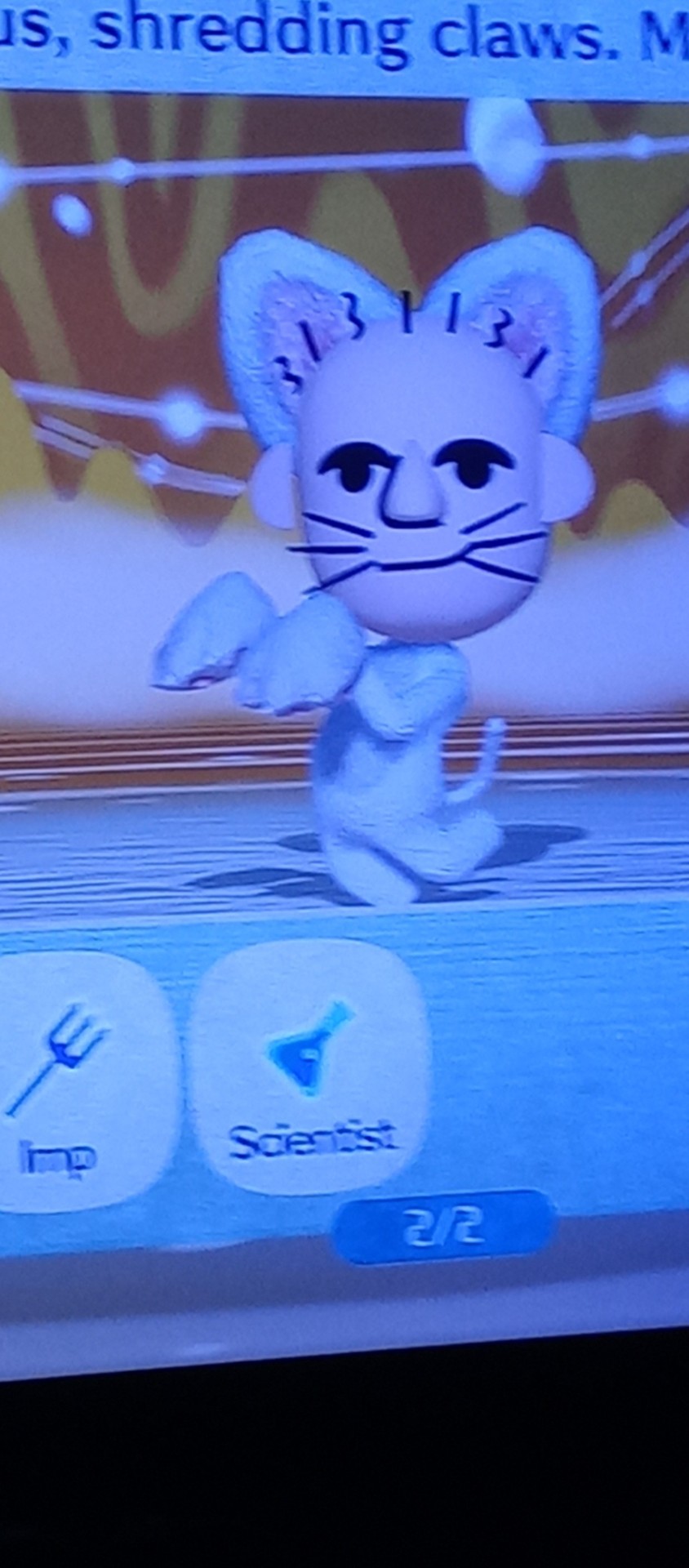
Oh god
Oh fuck
#rhythm heaven#rhythm paradise#rhythm hell#karate joe#miitopia#ok just so yall know comet is gonna fight eglantine the dark lord soon.
4 notes
·
View notes
Text

Stars: Comet - by Breath Art
#under the milky way#night sky#celestial enrichment#under starry skies#comet#shooting star#starry night#celestial odyssey#stellar enrichment#stellar odyssey#the heavens above#the stars above#stellar audience#the cosmic dance#celestial ceiling#stars
0 notes
Text

IN LONDON!!!!!??????
#s#natasha pierre and the great comet of 1812#bro if i get to see this live i will spontaneously ascend to heaven and simultaneously achieve nirvana holy shit
1 note
·
View note